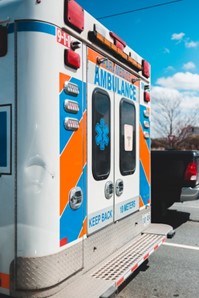Bavinton Morales is a contributor on technology with a foundation in healthcare and emergency response. In the following article, Bavinton Morales of Georgia explains how technology advancements are reshaping emergency medicine.
In emergency healthcare, every second counts. The ability to deliver prompt and effective care can mean the difference between life and death. As technology continues to advance at a rapid pace, healthcare providers are harnessing the power of innovative tools and solutions to revolutionize emergency medical services (EMS).
From telemedicine solutions to artificial intelligence (AI)-driven diagnostic tools, the integration of cutting-edge technology is reshaping the landscape of emergency healthcare, enhancing response times, improving patient outcomes, and increasing overall efficiency.
Bavinton Morales Discusses Telemedicine Solutions and Breaking Down Geographic Barriers
One of the most significant advancements in emergency healthcare is the adoption of telemedicine solutions. Bavinton Morales explains that Telemedicine technology allows healthcare providers to remotely assess and treat patients in real-time, breaking down geographic barriers and expanding access to critical care.
In emergency situations, telemedicine enables paramedics and emergency medical technicians (EMTs) to connect with physicians and specialists, facilitating rapid decision-making and ensuring that patients receive timely interventions, even in remote or underserved areas.
For instance, in cases of complex medical emergencies or traumatic injuries, paramedics can consult with emergency physicians to obtain expert recommendations on patient management, ensuring optimal care delivery from the moment of injury to arrival at the hospital.
Moreover, telemedicine facilitates collaborative care among multidisciplinary teams, enabling seamless coordination between emergency medical services (EMS) personnel, emergency department staff, and specialized consultants. This collaborative approach ensures that critical information, such as vital signs, medical history, and diagnostic imaging, can be shared securely and efficiently, enabling all stakeholders to make well-informed decisions regarding patient care and treatment plans.
This technology also plays a crucial role in improving patient outcomes by
reducing unnecessary delays in accessing specialized care. In emergencies where time is of the essence, such as stroke or cardiac arrest, telemedicine enables paramedics to quickly transmit vital patient data, such as
electrocardiograms (ECGs) or neurological assessments, to receiving hospitals or telestroke centers.
This early transmission of critical information allows emergency physicians and specialists to initiate appropriate interventions promptly, potentially mitigating the severity of the patient's condition and improving their chances of survival and recovery.
Furthermore, telemedicine enhances the overall efficiency of emergency healthcare delivery by streamlining communication and reducing the need for unnecessary transfers or ambulance diversions. By enabling remote consultations and virtual triage, telemedicine helps healthcare systems optimize resource allocation and minimize unnecessary strain on emergency departments, ensuring that patients receive timely care without overwhelming hospital capacity.
 AI-Driven Diagnostic Tools Provide Precision and Efficiency
AI-Driven Diagnostic Tools Provide Precision and Efficiency
Artificial intelligence (AI) is revolutionizing emergency healthcare with its ability to analyze vast amounts of data and identify patterns that human clinicians may overlook. AI-driven diagnostic tools, such as machine learning algorithms and predictive analytics, enable healthcare providers to make more accurate and timely diagnoses, leading to improved patient outcomes. Bavinton Morales explains that these tools can assist in identifying life-threatening conditions, such as stroke or sepsis, based on patient symptoms and medical history, allowing for swift intervention and treatment.
Remote Patient Monitoring and Proactive Care
Remote patient monitoring (RPM) technology allows healthcare providers to monitor patients' vital signs and health status in real-time, even when they are outside of traditional healthcare settings. In emergency healthcare, RPM technology can be particularly valuable for monitoring high-risk patients, such as those with chronic conditions or recent surgical procedures.
Bavinton Morales of Georgia says that by continuously monitoring patients' health metrics, such as heart rate, blood pressure, and oxygen saturation, healthcare providers can detect potential complications early and intervene before they escalate into emergencies.
Mobile Apps and Wearable Devices Empower Patients
Bavinton Morales of Georgia notes that mobile apps and wearable devices are empowering patients to take control of their health and access emergency healthcare services more efficiently. With the widespread availability of smartphones and wearable technology, patients can quickly access medical assistance with the touch of a button.
Emergency response apps allow users to alert emergency services and provide critical information, such as their location and medical history, in the event of an emergency. Wearable devices, such as smartwatches and fitness trackers, can also monitor vital signs and alert users to potential health concerns, prompting them to seek medical attention when necessary.
Integration and Interoperability Offer Seamless Communication
Bavinton Morales observes that one of the key challenges in emergency healthcare is ensuring seamless communication and data sharing among various healthcare providers and emergency response teams.
Interoperability—the ability of different systems and devices to exchange and interpret data—is essential for facilitating coordinated care and improving patient outcomes. Healthcare organizations are increasingly investing in interoperable technologies and platforms that enable real-time communication and data sharing between emergency departments, ambulance services, and other healthcare providers, ensuring that critical information is readily available to those who need it most.
Final Thoughts
In conclusion, Bavinton Morales the role of technology in enhancing emergency healthcare services cannot be overstated. From telemedicine solutions to AI-driven diagnostic tools, innovative technologies are revolutionizing the way healthcare providers respond to emergencies, improving response times, enhancing patient outcomes, and increasing overall efficiency. As technology continues to advance, the future of emergency healthcare holds promise for even greater innovations and advancements, ultimately saving lives and improving quality of life for patients worldwide.
 AI-Driven Diagnostic Tools Provide Precision and Efficiency
AI-Driven Diagnostic Tools Provide Precision and Efficiency